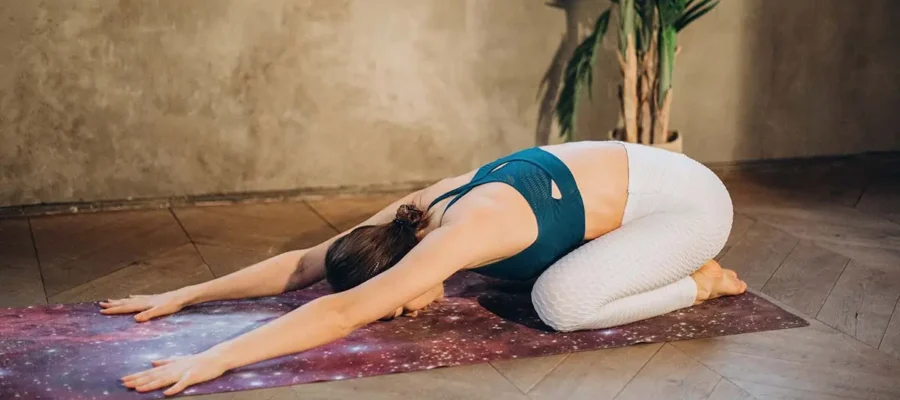Yoga poses before bedtime helps to relax the body and bring better sleep. Yoga instructors and physicians recommend following certain poses with the proper instructions for the correct practice of these poses. Always learn the poses one to one from an instructor. This helps you understand the right way to stretch, and you need to follow certain poses in the best manner.
5 Bedtime Yoga Poses for Better Sleep
1. Balasana: Child’s Pose
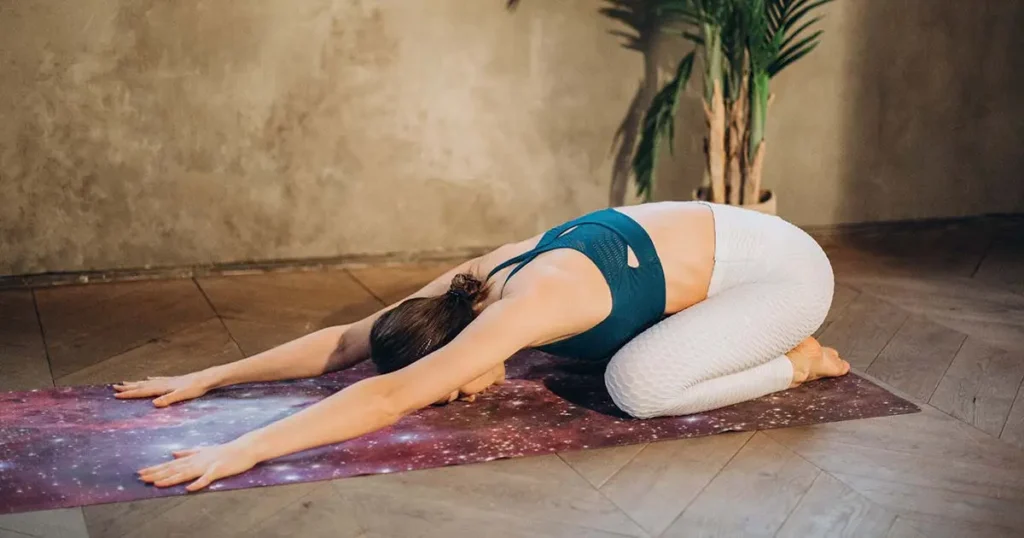
This is a resting pose giving a sense of stability and calm. However, people with knee and hip injuries should not practice it unless an expert tells them to do so.
- Kneel on the floor, bringing together your big toes.
- Separate the knees and toes hip distance apart.
- Exhale and bring down your torso on the thighs.
- Let your hands relax alongside the torso. You can also clasp the hands together, pointing towards the back of the room. This releases the tension of the shoulder blades and muscles bringing them into a relaxing pose. It’s vital to relax the shoulder tension as you widen the shoulder blades.
- You can go for more active poses by reaching your hands forward with palms facing and touching the ground.
- Relax while keeping the forehead to the ground and gently rolling the head on both sides. It helps to release the brow tension.
- Breathe spontaneously in and out through your nose.
2. Uttanasana: Standing Forward Bend
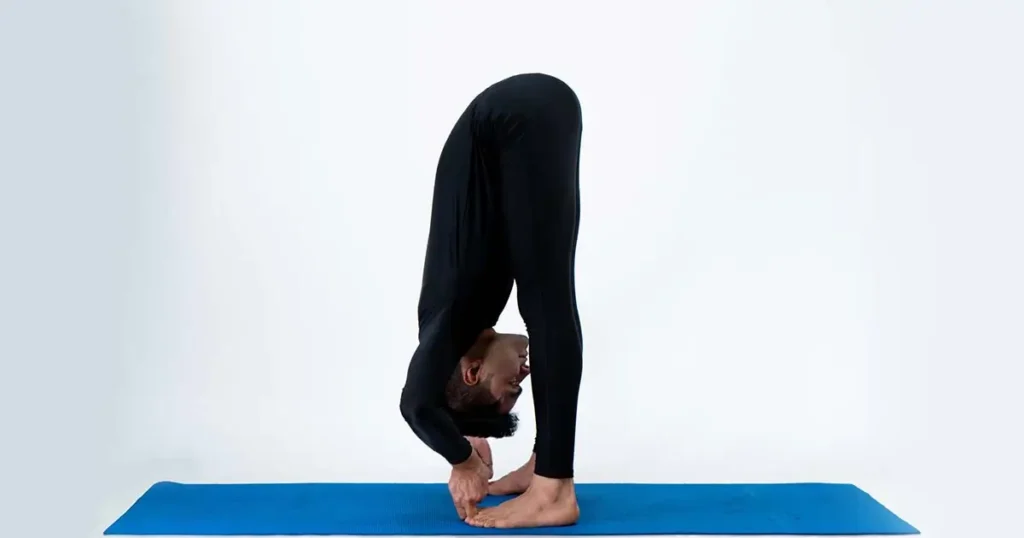
- Stand erect with your feet shoulder-width apart. Relax and inhale deeply.
- Exhale to extend your torso in the front keeping the lumbar region upright. The torso sinks parallel to the ground and reaches a position between your thighs and legs. Now, elongate your spine.
- Fold both elbows and rest your hands on the elbow. You can also let the hands rest on the floor to let your hands rest on the floor or the shins.
- Extend only to the extent your body feels comfortable doing so. Do not overstretch. You should comfortably be able to stretch your spine and relax the neck and shoulders.
- This pose relaxes the neck tension and provides a gentle stretch to the hamstrings, hips, and calves. Those with back pain or back injury need to be careful about it.
- Breathe in and out spontaneously and deeply through your nose.
- If you have tight hamstrings, keep soft knees and bend them slightly to relax your chest on the thighs.
- Shaking your head gently “yes” and “no” to loosen the neck muscles.
- Come up slowly while rolling up gradually to reach a standing position, so you do not feel light-headed.
3. Ardha Uttanasana: Standing Half Forward Bend

Ardha Uttanasana is a modification of Uttanasana pose.
- Put your mat at 90 degrees to the wall.
- Stand nearly a foot away from the wall; standing erect with your feet shoulder-width apart is essential. Place the feet hip-width apart and parallel to the edges of the mat.
- At the level of the hips, press your hands against the wall. Your feet need to be firmly grounded at this time.
- Now, step back while lowering your torso and keeping the lumbar straight till you arrive at the final position where your back is perpendicular to the ground.
- With your palm, press away all the way while lengthening the back.
- Press the palms against the wall and also counter pressure with the feet.
- Your ears need to be in line with your arms. You may adjust your distance from wall distance from the wall so that it remains perpendicular to the wall. You should be neither too close nor too far apart from the wall. Make sure you keep breathing deeply, keeping your palms pressed against the wall.
4. Supta Baddha Konasana: Reclining Bound Angle
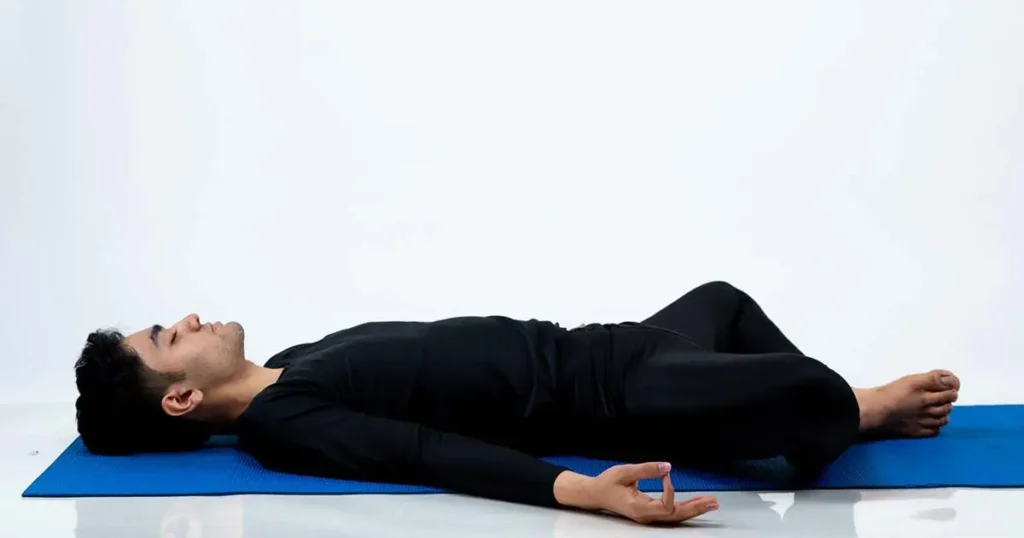
This pose proves helpful in releasing tension in the groin and hip area. However, you must be cautious in case of hip, knee, or groin injuries.
- Lie down on your back on the mat.
- Bend your knees while grounding your feet close to your tailbone.
- Place the heels against each other, allowing your knees to relax while building sweet and mild pressure to comfortably bring the ground level as much as possible. Support your hips by placing firm cushions or blocks underneath your knees.
- People who have tight hips should adjust their feet and knee level to place them further away from the tailbone for changing your feet from your tailbone by placing cushions and blocks below your knees to maintain the right height.
- Keep the arms relaxed on the floor at an angle of 45 degrees from your torso. Keep the palms towards the ceiling.
- A gentle stretch is essential in your groins and hips, but it should not be comfortable.
5. Viparita Karani: Legs Up Pose
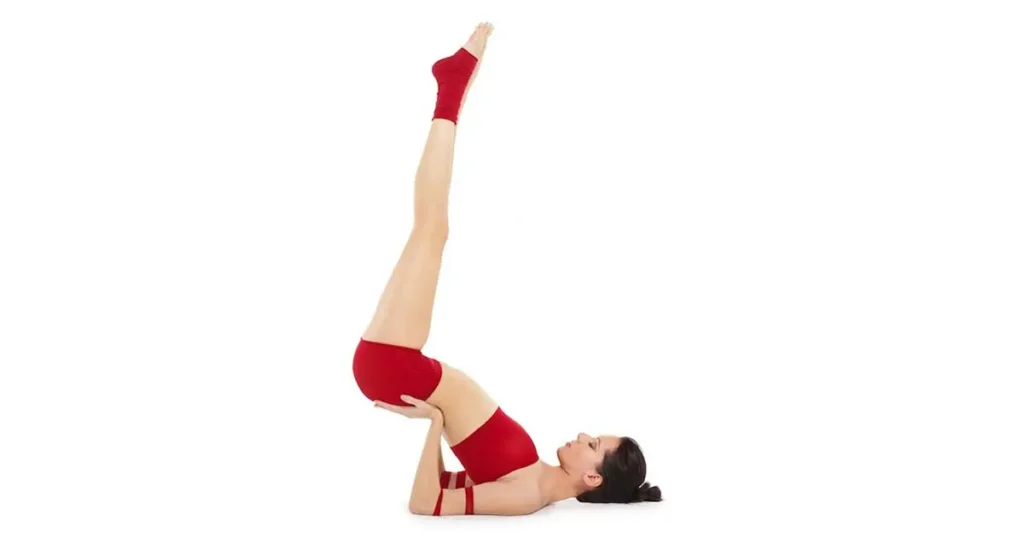
Our days are active, so we’re on our feet all day. That means your feet get tired and swollen at the end of the day. Vipitarani helps to recirculate the blood towards the heart.
- Place the mat perpendicular to the wall. Sit down on the mat, keeping either the right or the left side perpendicular to the wall.
- Giving a little space between the wall and your legs, lie down on your back, gently placing the legs on the wall. Keep your arms relaxed by the sides.
- A rolled-up mat or a firm cushion underneath the tailbone can offer additional support.
Do not forget to end all these asanas with savasana or the corpse pose. In this pose, you lay on the back on the mat with feet spread hip-width, arms by the sides, and a little away from the body. Close the eyes and relax each body part, focusing lightly on the feet, legs, hips, tailbone, navel, abdomen, back, arms, shoulders, hands, neck, facial features, and more. Relax each part. Savasana is the most relaxing part.
You may also like:
- 4 Life-Changing Benefits of Yoga and Meditation
- The Practice Of Yoga And Ayurveda In Relationship With Sustainability
- Yoga For Better Sleep: Poses, Types, Benefits, and More
Key Takeaway
Choose a silent part of the home to do your practice. Wear comfortable night clothes for this practice. Ensure the place is safe for exercise and no potential hazards occur. It is vital to get one-to-one training from a proficient yoga practitioner. It’s also appropriate to consult a physician to have a good insomnia or sleep treatment plan.
